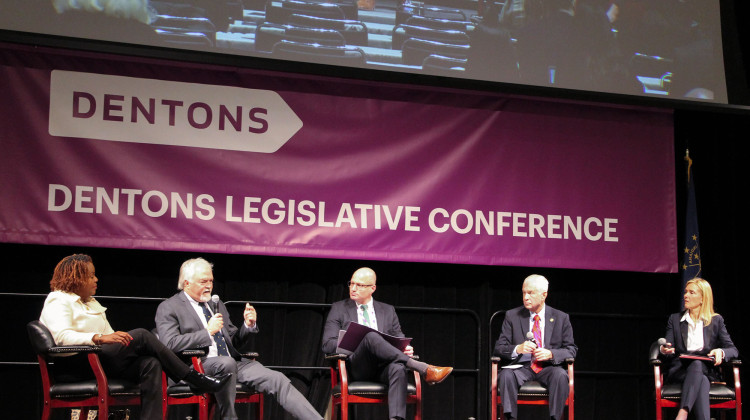Indiana’s top law enforcement officer, Attorney General Curtis Hill, has accused the federal Centers for Disease Control and Prevention of manipulating facts in order to push a “pro-needle-exchange agenda.” He made the accusation in a statement released Tuesday.
Last month, the CDC sent a letter to the Governor’s Task Force on Drug Enforcement, Treatment and Prevention asking it to correct a 2016 report. That report stated drug users in Scott County, Indiana increased the number of times they injected drugs after the county started an exchange program, “with the median injection frequency rising from five to nine times per day.”
“This conclusion is erroneous,” the CDC letter states.
The authors write that initial data from the exchange were misinterpreted. Follow-up interviews with drug users showed that they did not increase their drug use after the implementation of the syringe exchange program in Scott County.
The letter adds multiple studies have shown that syringe exchange programs “are effective in reducing HIV transmission and do not increase rates of community drug use.”
“I don't buy it at all,” says Hill.
He acknowledges syringe exchange programs can help prevent the spread of disease. However, he insists they increase the amount of drug use in a community, and points to the original finding of the 2016 report on Scott County. “The point is that the drug use is continuing. It’s certainly not going down,” he says.
Hill has spoken out against syringe exchange programs since he started his job back in January. His views are countered by numerous experts who study the programs, including the new U.S. Surgeon General and former Indiana Health Commissioner Jerome Adams who has been a vocal proponent of syringe exchanges.
“There’s been no evidence that [a syringe exchange program] increases drug use,” says Dennis Watson, an addiction and mental health researcher at the Indiana University Fairbanks School of Public Health.
On the contrary, he says, exchange programs can actually decrease the amount of injection drug use. “They can be a gateway for getting people into treatment, by forming a relationship with someone,” he says.
A Seattle-based study found that syringe exchange participants were five times more likely to enter treatment than those who didn’t participate.
“Even if substance abuse stays at the same level, we’re preventing a bunch of other harmful problems for people, such as HIV and hepatitis,” says Watson.
This story was produced by Side Effects Public Media, a news collaborative covering public health.
 DONATE
DONATE








 Support WFYI. We can't do it without you.
Support WFYI. We can't do it without you.